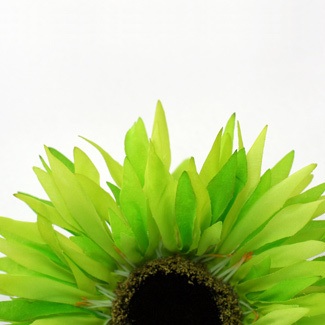



"Klaus Weigelt sat on a red leather sofa beneath a sun-yellow, gold framed oil painting and watched the smoke from his cigarette as it floated towards the chandelier above his head.
"Not long ago, I was down and out in Berlin," said the former electrician. "Now I'm sitting in the lap of luxury."
Weigelt, 57, is a resident in Haus Schöneweide in a suburb of south-east Berlin, a refuge for homeless men which, following a €100,000 (£98,000) refit, has been dubbed the swankiest homeless shelter in the world.
Before its revamp, the shelter, which was tiled in blue from top to bottom, resembled the cold interior of a butcher's shop. But Berlin-based concept artist Miriam Kilali took it on herself to rip out the scruffy and less than inspiring decor, and lobbied politicians, furniture shops, designers and friends for materials and funds.
Now Italian wallpapers, gold trimmings, parquet flooring, red carpeting and crystal chandeliers have replaced the tiles, lino flooring and strip lighting that previously defined the face of the three-storey house. The overall effect is of a chic boutique hotel with Mediterranean undertones that would not be out of place in a trendy Berlin quarter.
The finished work of art, which Kilali said resembles a "living painting", is called Reichtum 2.
"It means wealth," she said. "It's a symbol, an attempt to give the 21 men who live here a sense of self-worth and a decent place where they might find dignity and respect - wealth of sorts after all they've been through."
The smell of stale alcohol and tobacco lingers in the air, a reminder that the residents are chronic alcoholics, most of whom suffer from mental disorders and none of whom are likely to recover. "Nobody really has time for alcoholics," said Kilali. "Children and animals yes, but not ageing alcoholic men.
"When we were trying to raise the funds there was a lot of tension over spending such a lot of money and questions as to why these men in particular should benefit. After all, what had they contributed to society?"
Even the residents themselves were sceptical. "They don't tend to like change, because they've generally had too much change in their lives," said Christoph Brenneis, deputy manager of the home. "But we put together a prototype room and gradually they started to come round to the idea - and even helped with the refurbishment and choosing the decor."
The Guardian, 30 December 2008



